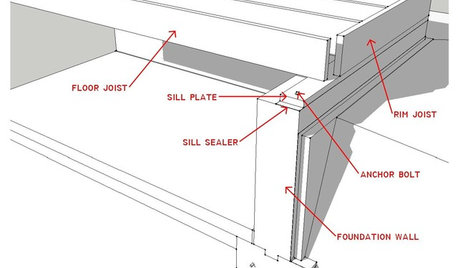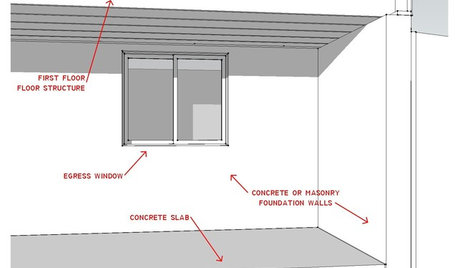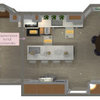rotted rim joist on foundation: who to contact???
jaansu
10 years ago
Related Stories

KNOW YOUR HOUSEKnow Your House: What Makes Up a Floor Structure
Avoid cracks, squeaks and defects in your home's flooring by understanding the components — diagrams included
Full Story
LANDSCAPE DESIGNGarden Walls: Pour On the Style With Concrete
There's no end to what you — make that your contractor — can create using this strong and low-maintenance material
Full Story
REMODELING GUIDESKnow Your House: The Steps in Finishing a Basement
Learn what it takes to finish a basement before you consider converting it into a playroom, office, guest room or gym
Full Story
FARM YOUR YARDHow to Build a Raised Bed for Your Veggies and Plants
Whether you’re farming your parking strip or beautifying your backyard, a planting box you make yourself can come in mighty handy
Full Story
REMODELING GUIDESCool Your House (and Costs) With the Right Insulation
Insulation offers one of the best paybacks on your investment in your house. Here are some types to discuss with your contractor
Full Story
CONTRACTOR TIPSYour Complete Guide to Building Permits
Learn about permit requirements, the submittal process, final inspection and more
Full Story
MOST POPULARHow to Add a Backyard Shed for Storage or Living
Need a home office, a playspace or extra room for your stuff? Learn about off-the-shelf, prefab and custom sheds
Full Story
SHOWERSYour Guide to Shower Floor Materials
Discover the pros and cons of marble, travertine, porcelain and more
Full Story
DECKSDecking Materials Beyond Basic Lumber
Learn about softwoods, tropical hardwoods, composites and more for decks, including pros, cons and costs
Full Story
MATERIALSInsulation Basics: What to Know About Spray Foam
Learn what exactly spray foam is, the pros and cons of using it and why you shouldn’t mess around with installation
Full StoryMore Discussions








millworkman
renovator8
Related Professionals
Newington Kitchen & Bathroom Designers · Southampton Kitchen & Bathroom Designers · Champlin Kitchen & Bathroom Remodelers · Ewa Beach Kitchen & Bathroom Remodelers · North Arlington Kitchen & Bathroom Remodelers · York Kitchen & Bathroom Remodelers · Arkansas Interior Designers & Decorators · American Canyon General Contractors · Berkeley General Contractors · Jefferson Valley-Yorktown General Contractors · Kyle General Contractors · Leon Valley General Contractors · Mountlake Terrace General Contractors · New River General Contractors · Valle Vista General Contractorsworthy
jaansuOriginal Author
aidan_m
jaansuOriginal Author
millworkman
jaansuOriginal Author
aidan_m